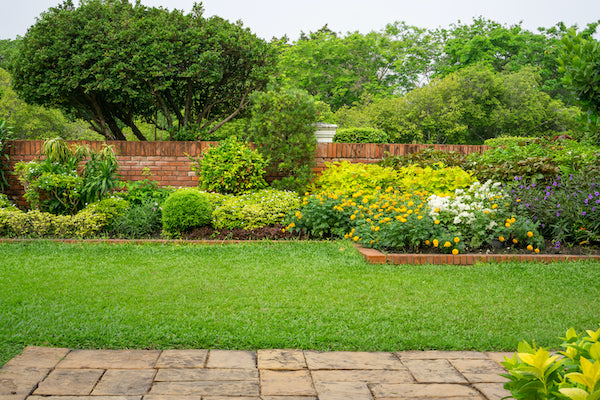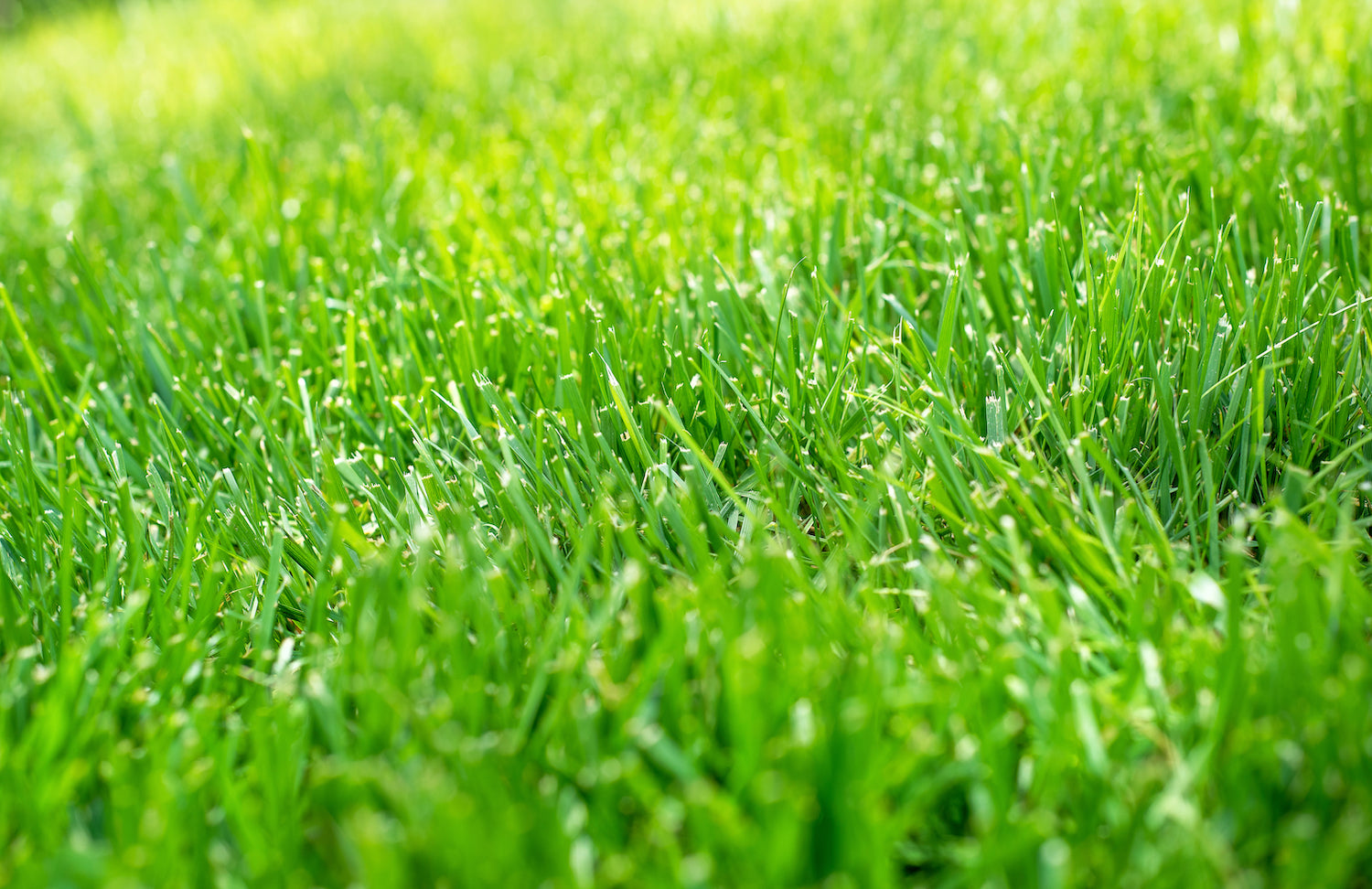
With some grass seed or a few pallets of sod, your new outdoor blanket awaits. But there is more to installing a new lawn than throwing down some sod or planting grass seed. A little bit of planning goes a long way toward growing a healthy lawn and conserving water while having the yard you still remember before drought was an issue.
Quick Answer
How to Grow Grass in San Diego
Did you know that there's quite a variety of grasses to choose from for your lawn? Here are some of our top picks for a great landscape:
- Hybrid Bermudagrass (Tifway, Tifgreen)
- Seashore Paspalum
- St. Augustine
- Fescue (tall or dwarf)

----
A Comparison
How To Grow Grass in San Diego
|
Variety
|
Traffic/Salt/Drought Tolerance |
Season
|
Sub Variants
|
| Hybrid Bermudagrass | High | Warm | Tifway, Tifgreen |
| Seashore Paspalum | High | Warm | |
| St. Augustine | High | Warm | |
| Fescue | Moderate | Cool | Tall, dwarf |
Noteworthy characteristics:
- Hybrid Bermudagrass can be found in Tifway or Tifgreen varieties. Tifgreen is medium green, fine-textured, tough, and durable. It is a low-growing, resilient sod which is highly tolerant to heat, smog and heavy traffic, making it ideal for homes with young children and pets, since it can take normal stress and quickly recover from damage. This is the most attractive of the bermudas. Tifway is an improved hybrid bermuda with excellent wear tolerance and is also a great choice for high traffic areas. With a fine texture, Tifway provides a dense turf capable of handling the stress of professional sports turf.
- Seashore Paspalum is a professional grade warm season sports turf developed for use on sports fields, golf courses, and home lawns. It is resilient and heals fast from foot traffic. Seashore Paspalum is fine textured with a deep green color. It is drought tolerant and commonly used near coastal areas as it is extremely salt tolerant as well.

Above: St. Augustine grass
- St. Augustine is thick and resilient. It normally grows in the South and is fairly high maintenance. This aggressive, low-growing, warm season grass is coarse with a broad blade. It tolerates shade and drought and can handle saline conditions.
- Fescue comes in tall and dwarf varieties. Tall fescue is very tolerant of fluctuating temperatures and foot traffic. It is very common in cooler climate areas and does well in Southern California. Dwarf fescue is shorter and dark green in color. It can establish faster than tall fescue and requires less mowing. It does not stand up to foot traffic as well as tall fescue, but can establish more quickly. Though fescue is a cool season grass, it will do fine in warmer months if irrigated properly.

Above: Fescue grass
How To Grow Grass 101
How To Grow Grass In San Diego
Now that you’ve picked the best grass for your space, it’s time to get planting! Here are some things to keep in mind as you prepare, as well as how to maintain a healthy, attractive lawn for the years to come.

1. Sod vs. Seed
Before you can begin the rest of your planning, you need to decide if you are going to plant grass seed or lay sod. The preparation for both is somewhat similar, but the maintenance and time for establishment is different for each. Seed will cost less than sod, require more water, and take longer to establish. Sod will cost a little more to buy, be a little more work to put down, and will require less time to establish.
To sum this up:
- Sod will establish quicker and take less water. Sod is heavy, thus more work to put down.
- Seed will cost less, but use more water to establish. Seed will be easier to spread.
2. Soil Prep & Installation
Whether you are planting a grass seed lawn or laying a sod lawn, the number one factor in long-term success is the preparation of your soil. To properly prepare the soil, follow these tips:
- First, kill any perennial weeds. If you are installing a lawn in a particularly weedy area, you may need to go through a few cycles of turning the soil over, letting the weeds germinate and then killing them to reduce the weed seed bank.
- Prepare soil amendments and till them into the soil. The best soil for grass is sandy loam, which includes some sand and some organic matter. If the soil is all sand, or very hard clay, you will want to till in a compost/topsoil mix to improve the soil structure and fertility. It’s important to incorporate the elements into the existing soil. If you simply lay new soil on top of old soil, you can cause a drainage problem because water will not move well from one layer to the next—it could drain too fast or too slowly.
When installing sod, it is important to stagger the strips so that your lawn does not look like a checkerboard. Lay the two pieces of sod down, end to end, with about an inch or two of overlap on each end. Then push the ends together and down to the ground.
Grass seed can be sown directly on top of the soil. To keep the seed moist, straw can be spread on top of the seed. Do not use hay or straw with seed heads, as you will run the risk of incorporating weeds into your new lawn.
Find more details and specifics about soil prep here.

3. Maintenance
With seed and sod, it is important to keep foot traffic off the lawn until it is established. Sod needs about 6-8 weeks to fully establish. A lawn planted with grass seed needs at least two months before any foot traffic is allowed, and up to four months before it can withstand heavy foot traffic.
After the lawn is established, apply a granular pre-emergence herbicide to keep weeds from sprouting in the new lawn. Do NOT apply this herbicide at the time of planting, as it will interfere with establishment. Only use after 8 weeks of establishment for sod and 4 months after the seed has been started.

Irrigation
Take a look at your irrigation system and check for broken or plugged sprinkler heads, as well as sprinkler head alignment. Depending on the age of your irrigation system, now just might be a good time to consider an upgrade. Many new systems use sensors and historical data to provide water according to your lawn’s needs and the local climate. Especially in times of drought, this can be a great way to avoid over-watering your grass.
Combating Weeds & Fungus
Preventative measures will always pay off more than trying to reverse damage to your lawn. A healthy lawn can fight off enemies such as fungi, weeds, and insect pests. Keeping your turf grass cut at the correct height and applying water at proper times will go a long way in fighting off lawn pests.
Most turf diseases thrive under certain conditions that include moisture and temperature, and nitrogen supply. That is why you’ll notice that diseases appear during certain seasons. Extreme weather conditions, improper watering, too much or too little fertilizer, improper mowing height, soil compaction, uneven grading, accumulated thatch, overuse of lawn pesticides, or any combination of these may make your lawn more susceptible. Learn how to avoid some of these problems here.

Overseeding
If you have a warm-season lawn, the cooler months will turn that lawn dormant. The good news is that there’s an easy fix that will have your lawn green, full and fluffy through the fall, winter, and spring months ahead: overseed your lawn with Annual Ryegrass.
Fall is the time to overseed your warm-season grasses such as St. Augustine or Bermuda. Warm soil, cooler air, and fewer weeds make this the perfect time to overseed. Diseases that usually attack grass seedlings are also much less active in the fall.
In preparation for overseeding, you need to mow your lawn a little shorter than usual. Make sure you remove all the clippings, too; this allows the new seed application to get to the soil more easily. You may also need to aerate your lawn if you haven’t done this recently. Aerating allows the water and nutrients to penetrate deeper into the root system and allows your lawn to breathe! Find our full guide to overseeding here.
With these considerations in mind, you’ll be well prepared to grow a beautiful lawn. Stop by your local Grangetto’s to find expert advice, solutions, and tools as you start and maintain your new lawn.
More Resources:
- Prevent & Control Lawn Weeds
- Planting A New Lawn Step By Step
- Saving Water In Your Landscape
- Preventative Maintenance For Lawn Fungus



